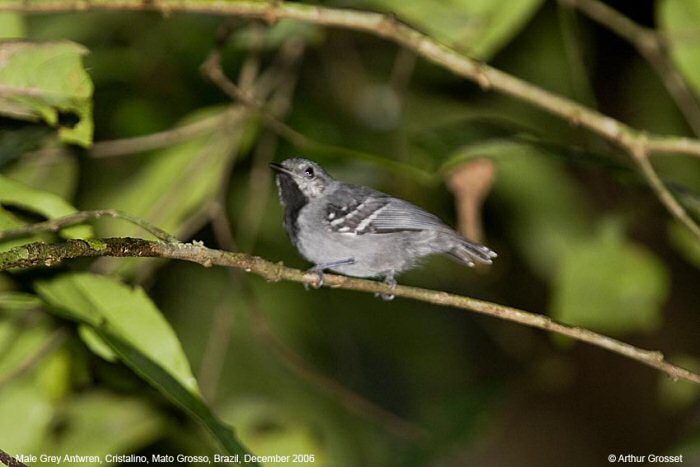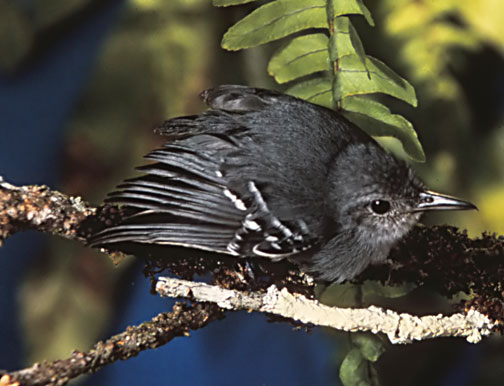
Myrmotherula menetriesii
TAXONOMY
Myrmotherula menetriesii d’Orbigny, 1837.
OTHER COMMON NAMES
French: Myrmidon gris; German: Buntflьgel-Ameisenschlьpfer;
Spanish: Hormiguero de Garganta Gris.
PHYSICAL CHARACTERISTICS
4 in (9.5-10 cm), with a rather short tail.
DISTRIBUTION
Northern South America, including southern Venezuela,
Guyana, eastern Colombia, eastern Ecuador, eastern Peru,
northern Bolivia, and much of Amazonian Brazil.
HABITAT
Up to 2,950 ft (900 m) in humid tropical forest, forest-edges,
and openings within forest. Mostly restricted to terra firme (or
non-flooded) forest.
BEHAVIOR
Nonmigratory pairs defend a breeding territory. Often join
mixed-species foraging flocks, but tend to feed higher in the
canopy than other species. Song is a weak series of about 12
repeated notes.
FEEDING ECOLOGY AND DIET
Glean insects and other arthropods from foliage in the middle
and upper canopy.
REPRODUCTIVE BIOLOGY
Monogamous pairs bond for life, typically lay two eggs, and
share incubation and care of nestlings and fledglings.
CONSERVATION STATUS
Not threatened. Widespread and locally abundant.
SIGNIFICANCE TO HUMANS
No direct significance, except for the indirect economic benefits
of bird-watching and ecotourism.
Other popular Animals
Photo Gallery of - Gray antwren




 Animalia Life
Animalia Life